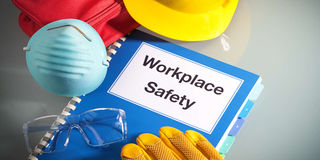Prime
There is a need for serious enforcement of the necessary workers’ safety standards

What you need to know:
- All workers are exposed to occupational hazards and dangers in different ways based on the nature and actual situations of their work environment.
In different sectors of production and economic services around the country, it appears the whole notion of health and well-being, as well as the safety of workers, has not been highly prioritized.
Where these are prioritized, the atmosphere reflects a sense of safety, which goes a long way to influencing the outcome of the workers’ engagement in the respective corporate processes.
Think of construction workers, farm workers, industrial workers, miners, chalkboard teachers, health workers, electricians, and many others.
In different ways, these professionals need a systematized support system that ensures that the exposure their work puts them into does not harm them.
They also need to be assured that when accidents happen or they get occupational diseases, they will be taken care of appropriately.
All workers are exposed to occupational hazards and dangers in different ways based on the nature and actual situations of their work environment.
Each is vulnerable to some possible deadly situations, either immediately or in the long run, if safety measures are not duly observed.
This is the reason there are workplace health and safety standards, which ought to be maintained to safeguard the lives and well-being of the workers.
To reduce the dangers around us, a lot of creativity is demanded of us. It is creativity that helps people circumvent danger.
In that, we need some time to discover the dangerous situation and think of possible ways to eliminate it from around us.
Creating solutions to these problems is one mark of an ideologically upgrading and progressing society.
However, some things have been maintained for years, which proves the point that our health, safety, and well-being are probably not among the things we care so much about.
The questions that are being asked are as follows: Are there safety standards? Is there sufficient compliance? Is there a working and fair reporting and compensation system? Are people made aware of their right to work in safe environments? Are there trainings on occupational health and safety skills for workers in more vulnerable work environments?
According to the National Occupational Health and Safety Policy (2009) published by the Ministry of Labour, Employment and Youth Development in Tanzania, "Promotion of Occupational Health and Safety encompasses provision and maintenance at the highest degree of safe and healthy working conditions and environment" (Chapter 1, page 7).
The policy goes on to expound in Chapter Six on the roles of different stakeholders in the workplace, particularly the government, employers, and workers.
For the government: "The government shall create an enabling environment for the implementation of occupational health and safety policy, put in place a regulatory and legal framework, and facilitate resource mobilization for the provision of effective occupational health and safety services." (Chapter 6, page 30).
The duties of the employer and the workers are also well specified.
"Employers will ensure health and safety at work through the establishment of health and safety committees at workplaces, conducting training, and reporting accidents, diseases, and other dangerous occurrences to relevant authorities" (Page 30).
Workers, on the other hand, are tasked with complying with the standards set for their safety in work environments.
While all these are good, their practicality is to be questioned. This I am doing from an informed background of the places where similar policies are in place and the enforcement of which is in place as well.
The government workers who deal with refuse collection, for example, are a vivid example of non-compliance with the workers' health and safety standards in working environments.
The refuse collectors are mysteriously surviving the difficult and dangerous work environments.
They come into unsafe contact with dirt in the refuse trucks. The trucks have not been made to adapt to their function to keep the workers as well as the public safe from possible hazards.
My first amazement when I first went to Europe was seeing the refuse truck run by one person. It is a modern vehicle that is safe for the public even when fully packed with refuse and dirt.
I don’t think our refuse trucks can park outside a restaurant without making people nauseous and disturbed. The question I asked myself at that moment was, "What do our leaders see when they visit Europe?"
Another sector with a handful of possible occupational hazards is construction. There is no firm enforcement regarding the conditions for particular construction work to be done. Workers, being unprofessional in matters of safety standards, need to be educated on how to keep themselves safe.
In Europe, you cannot build anything on your own; you don’t just go about mixing sand and building a house. It is not that they do not trust your ability to build, but it is because it is not safe.
Even simple electrical maintenance can land one in trouble for exposing oneself and the public to danger.
So many lives will be saved when the health and safety policy that reads so nicely on paper is fully and diligently enforced and implemented.
We need to go beyond the bare minimum to embody standards as a necessary component of who we are as a working nation.
Employers and workers should be held accountable for non-compliance, each for their part, while the government works to ‘create an enabling environment’ as the policy reads.





